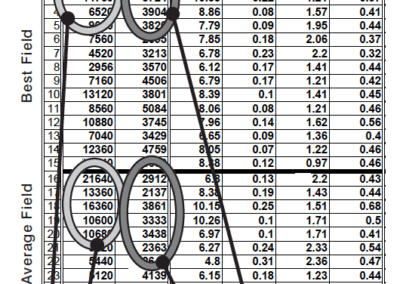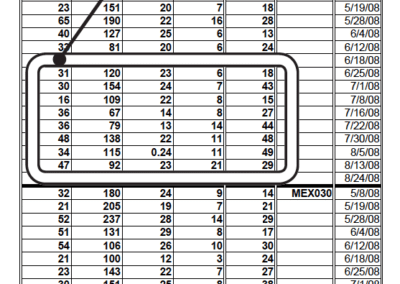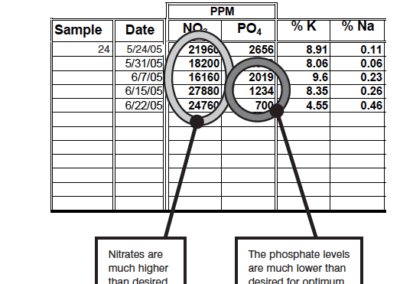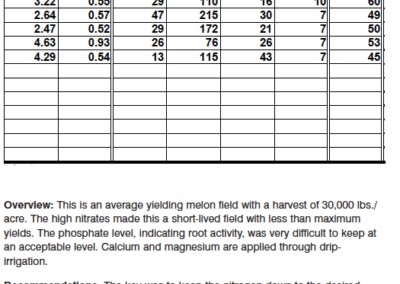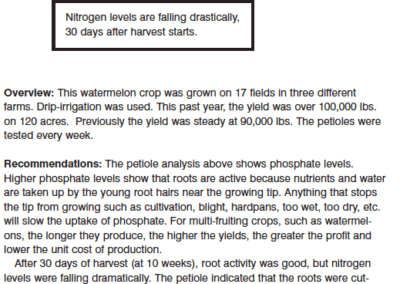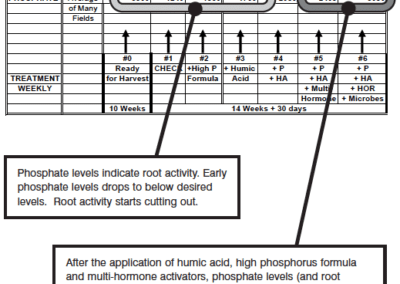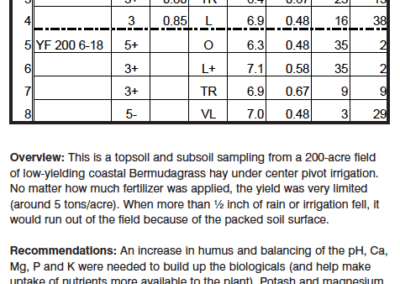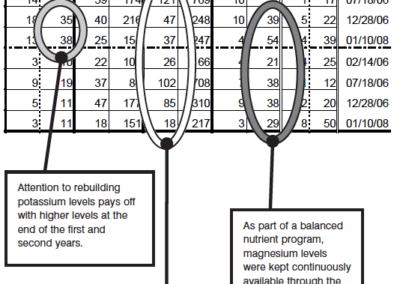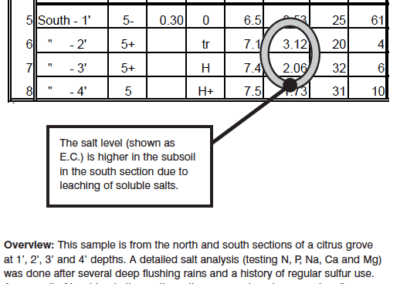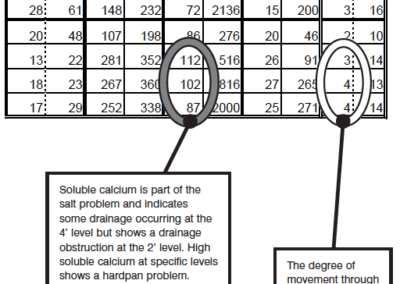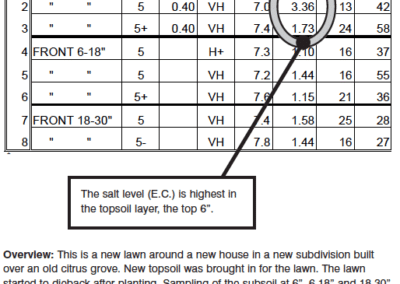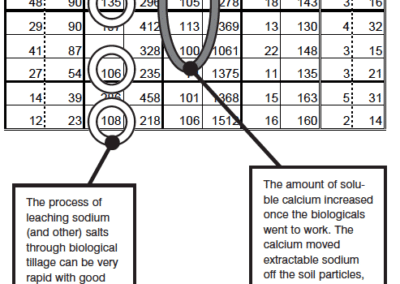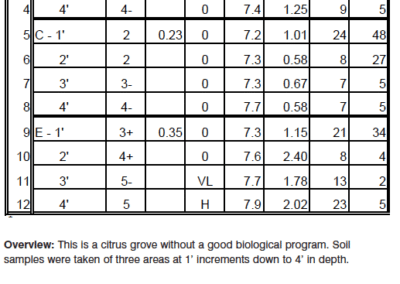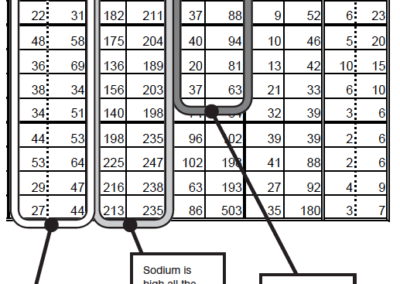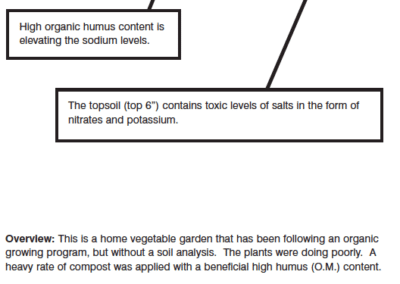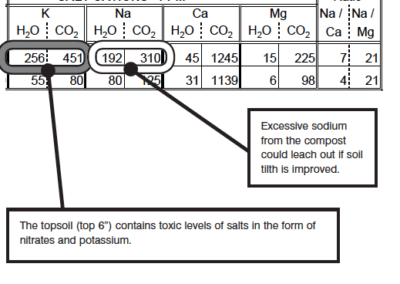By Charles Walters
The first step on the road to achieving healthy soils able to sustain productive plants is the soil or plant analysis test. For optimum results, the initial test relies heavily on proper sampling.
Quality samples submitted to the laboratory and excellent testing methods can produce the most accurate results possible but without an interpretation of the nutrient recommendations that speaks to the grower — all may be for naught.
Graphs and charts filled with color-coded lists of numbers speak volumes to those that know how to read them. But the uninitiated may glean just a fraction of the total message.
A soil or plant analysis test from a quality laboratory contains much more than just the raw data. Using an integration of field and cropping history with the test results, interpretations and recommendations are formulated to tell the grower the meaning behind the numbers. It is these soil and plant test interpretations and recommendations that matter most and have the greatest benefit for many people.
Agronomist Esper K. Chandler, author of Ask the Plant and founder of TPS Lab, was asked to look at several plant and soil analysis tests from different crops and give his expert interpretation of the results. The results are below. For each example, Chandler’s comments offer new insight and enlightenment about what the results said to him. The soil and plant test samples presented in this chapter are actual real-life examples included here with Chandler’s dictated interpretation and recommendations — presented so others can gain a deeper insight into the important messages held within. For each example, the most important messages have been highlighted and explained by Chandler.
Above: A Guide from TPS Lab on Compost STA Test Reports.
Source: Ask the Plant; https://www.tpslab.com/blog-listing/item/20-compost-seal-of-testing-assurance-test-reports-explained


